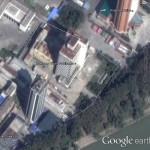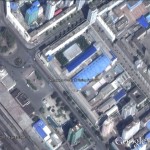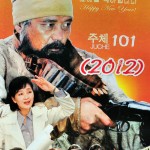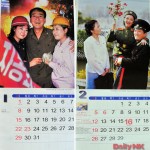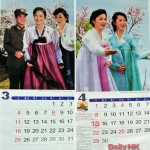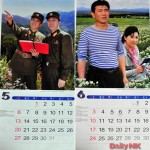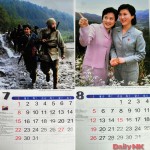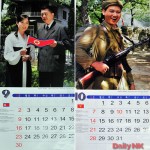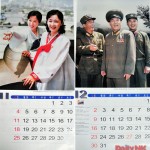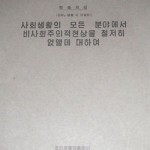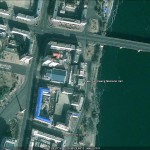Daily NK
Namgung Min
10/8/2008
As rumors regarding Kim Jong Il’s illness surfaced during North Korea’s 60th anniversary celebrations, opinion was divided on whether the military or the Party will rise in power post-Kim Jong Il.
It is true that the power of the military rose post-Kim Il Sung, according to the “military-first” political line. The National Defense Commission (NDC) began leading various agencies and councils, and came to hold greater power because Kim Jong Il was introduced as the National Defense Commission Chairman during North-South Summits.
Thus, the National Defense Commission under military-first politics began to appear to be North Korea’s sole power base, as news on general-level promotions was released publicly by the National Defense Commission.
However, despite military-first politics, it remains the Chosun (North Korea) Workers’ Party that fundamentally controls the North Korean regime. Therefore, in order to understand the North Korean regime, one must understand the Chosun Workers’ Party.
Upcoming October 10th is the founding anniversary of this most important of organizations. The eyes of the world are focused on whether Kim Jong Il will appear on this day or not.
Therefore, it is time to closely examine what the Chosun Workers’ Party does and how it controls the North Korean regime.
The Korean Workers’ Party claims to be the direct heir to the North Korean Branch of the Chosun Communist Party that was established during “The Chosun Communist Party Convention of Leaders and Devotees of the 5 Northwest Provincial Party Committees” held on October 10th, 1945. Hence the founding date is October 10th. In April, 1946 the name was changed to the North Chosun Communist Party, which then became the Chosun (North Korean) Workers’ Party after being merged with Chosun New People’s Party in August of the same year.
North Korea is operated under the leadership of the Chosun Workers’ Party, as previously seen in other socialist countries; the nation’s power is concentrated in the Party. This implies that as the Party controls the country, the country is evolving into a socialist society and from there into a communist society.
The Workers’ Party, venerable as it is, not only holds the highest position of authority in North Korea but thus stands above other national agencies, organizations or the military.
I. The positions and roles of the Chosun Workers’ Party
The positions and roles of the Workers’ Party are described in detail in the “Rules and Regulations of the KWP,” “Ten Principals for the Party’s Unique Ideological System” and the “Socialist Constitution of North Korea.”
It is written in Article 11 of the Socialist Constitution, amended in 1998, that “The DPRK shall conduct all activities under the leadership of the Workers’ Party.” Furthermore, the Workers’ Party is stated to be an organ that controls other agencies and organizations as the highest revolutionary organization leading all other working organs.
However, the socialist constitution and the rules of the Party are only for the purpose of propagating the notion of the rationality and legitimacy of North Korea abroad while concealing a dictatorship. The reality within North Korea is completely different from the actual contents of the constitution.
In actuality, the socialist constitution and the rules and regulations of the Party defines that all sectors such as government, military, administration, judiciary, and even public prosecutor’s office are led by the Party, while being utilized as the apparatus for Kim Jong Il’s Stalinist dictatorship. That is, the regulations recognize the Party’s leadership of the country and simultaneously state that the Party can only be operated and led by Kim Il Sung and Kim Jong Il.
The Workers’ Party in legal terms is an organ that guides North Koreans, but in reality it is only an organ under the iron command of the supreme Leader. Therefore, the Leader stands in the highest position, above the Party, nation and sovereign organs.
II. The structure and functions of the Chosun Workers’ Party
The utmost decision-making organ of the Workers’ Party is the National Party Congress.
According to the rules and regulations of the Party, all decision making of the Party regarding policies, strategies, and tactics should be passed through the National Party Congress. However, in actuality the Party Congress only rubber stamps the decisions that were already made by the Central Committee of the Party.
It is theoretically a ground rule that the Party Congress meets once every 5 years. The first congressional meeting was held in August 1946, the Congress met for the 6th time in October 1980, but has failed to meet since; 28 years. The fact that the Congress is not meeting regularly signifies that the regime system is not operating according to accepted principles of socialist states in the past.
If the Congress fails to meet, the Central Committee of the Party functions as the highest decision-making organ. The Central Committee should meet and discuss issues once every 6 months.
During these meetings, the General Secretary, committee members and the Presidium of the Politburo and committee members of the Central Committee of the Party should be elected. The Central Committee also has the authority to organize the Secretariat and the Central Military Commission.
However, even these twice annual meetings have not been held since the 21st meeting of the 6th cohort in 1993. When the meetings are not held, then the Politburo needs to take authority. However, the Secretariat of the Central Committee, whose General Secretary is currently Kim Jong Il, currently does so.
The highest organ in a communist society is officially the Presidium of the Politburo. In North Korea, Kim Jong Il is the only left in the presidium after the deaths of Kim Il Sung and Oh Jin Woo. This is why North Korea is sometimes called a totalitarian state. In the Chinese government, the Politburo presidium is properly functioning and decisions are made here. From a “democratic” perspective, the Chinese Communist Party and the Chosun Workers’ Party are completely different.
In any case, within the Secretariat of the Central Committee there are specialty departments such as the Guidance Department, Propaganda and Agitation Departments, and the United Front Department, and it also includes departments that supply secret funding to Kim Jong Il such as the 38th and 39th Departments.
The provincial organs of the Party consist of party committees of provinces, cities and counties that even include the most basic low-level party committees such as elementary party committees and sector party committees.
The structure of the Workers’ Party can also be divided into permanent party organs and temporary collective leadership groups. The permanent party organs include all members who work in any specialty departments, from the Central Committee down to low-level provincial party organs. Temporary collective leadership groups signify councils of high-level or low-level leaders of the central and provincial organs, made to implant permanent authority within the society through various meetings.
There are approximately 4,000,000 members of the Workers’ Party, including Kim Jong Il, high-level officials to low-level members, and figures from the legislature, judiciary, and the administration.
III. Main Departments and Their Roles
The main government complex of the Central Committee of the Worker’s Party is located in Changkwang-dong, Joong-district of Pyongyang. There are many buildings in the complex which include Kim Jong Il’s personal office and most of the Central Committee departments.
The second government complex is located in Junseung-dong, Moranbong-district of Pyongyang. The Social Culture Department, United Front Department and Operations Department are included in this complex.
The Workers’ Party has placed all specialty departments under the authority of the Secretariat, to function as restriction and guidance on all areas of the party members, citizens and North Korea. There is a Guidance Department that observes party members then there are other departments that exercise political functions.
The Guidance Department actualizes party guidance and restraint within communities. The department functions as Kim Jong Il’s right hand and as the core department by restraining the lives of all officials, members and citizens within the party.
The Guidance Department sub-divides into the inspection department, official department, party-member registration department, administration department and a communication department that allows direct reports regarding any incident or accident. The Guidance Department also manages the judiciary and the public prosecutor’s office.
The inspection department is responsible for inspecting any anti-party, non-party, undisciplined or unreasonable activities that develop within the regime or leadership of the Party and report to Kim Jong Il. The Guidance Department inspection section is strictly separated from other departments and North Korean party members or officials are all fearful of it.
There are approximately 20 specialty departments such as the Propaganda and Agility Department, the 38th and 39th Departments to supply fund to Kim Jong Il, the United Front Department dealing with South Korea, the International Department, the Science Education Department, and the Operations Department that carry out political activities.
Currently the Korean Workers’ Party is in the middle of the process of replacing 1st or 2nd generation leaders with 3rd or 4th generation, often more practical, personnel.
